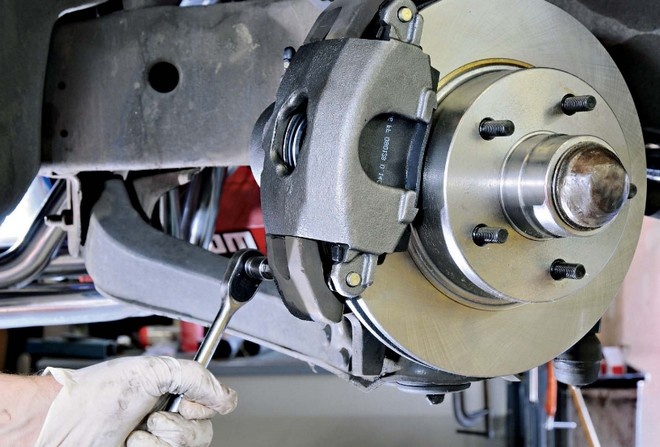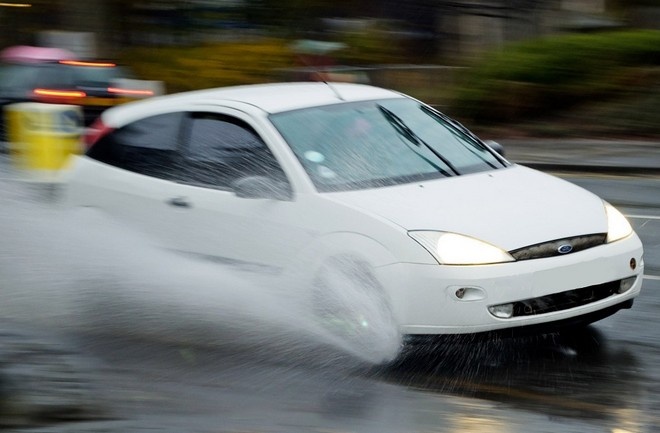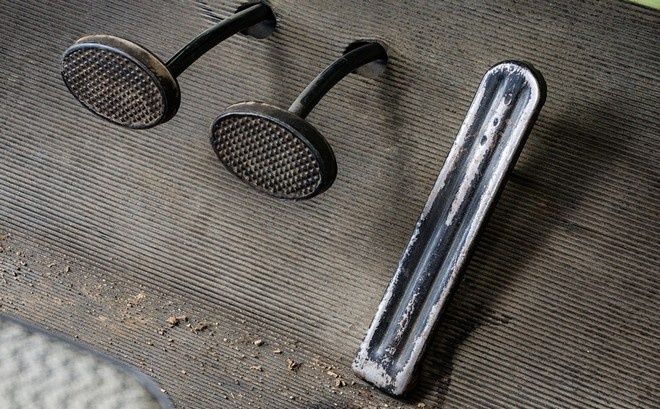Definitely one of the most important ones that needs to be checked regularly. Heeding warning signs that indicate the need for brake maintenance can mean the difference between life and death on the road. Therefore, it is very important to check the brakes in a timely manner.
Of course, there are some obvious signs that the brakes need service, such as a simple brake or ABS error on the dashboard of your car, or a feeling that the stopping distance is greatly increased, extraneous noises in the form of grinding, creaking or whistling when braking, and the like. . In many of these cases, you need to visit a local mechanic to have your brakes checked as soon as possible. But did you know that there are other signs that may explicitly or indirectly indicate a faulty brake system. Here we offer five signs that can help you save your brakes from a serious accident in the future and possibly save your hardware or even your life.
But first, a few words about how brakes work.
Most cars use what is known as disc brakes. They work in much the same way as the brakes on a speed bike. The hydraulic system, filled with brake fluid, has a brake pedal at one end and brake disc clamps, known as calipers, at the other, causing them to compress and thereby stop the brake disc, which spins with the wheel. The friction between the caliper and the brake disc eventually stops the car. But the caliper stops the brake disc through special brake pads (linings) - this is a consumable item that is designed to provide the best possible friction when they are pressed against the brake disc by the brake pedal.
Symptom #1: Grinding first when braking, then with any movement
Over time, the brake pads wear out, which leads to poor braking and extraneous noise in the car.
Fortunately, checking the thickness of your brake pads is a very simple procedure. All you have to do is look into the holes in your rim to see the thickness of the pads. However, it is not always possible to see all this through the holes in the disk - sometimes you have to remove the wheel.
But do not rush to check the pads after each trip - most often, normal pads are equipped with a special metal tongue that starts rubbing against the brake disc (steel rubs against steel), making a nasty rattle, specifically signaling the wear of the pads and that it's time to change the pads. The rattle at first appears only when braking - the thickness of the pads still has a small margin to the tongue, and the latter touches the brake disc only when the pads are pressed against the disc. But with further wear, the rattle is already present during acceleration and coasting.
But even if you ignore this rattle (however, this is not easy - the sound is often quite nasty), the tongue will break off as it wears further, and the rattle will stop. After that, the pads last for a while. And then a new rattle will appear - a little different from the rattle of the tongue of the pads. This means that the working surface of the pads has completely worn out, and the steel body of the pad is already rubbing against the brake disc. This is the most extreme case when driving is generally undesirable. Such a pad will not slow down (but the car will still stop well enough due to uncritically worn pads on other wheels).
Sign number 2: dull noise and grinding of pads
In addition to squeaking from pad wear, it can also be simple if a foreign object gets between the pad and the brake disc. Most often it is a pebble from the road. That is why, before buying a new set of pads, you should visually inspect the degree of wear of the current ones. If they are not worn out, then just such a pebble could be the cause. It will not necessarily be visible, but to remove it, you will most likely have to unscrew the brake caliper to check for foreign objects there.

Sign number 3: the car or steering wheel pulls to the side
Has your car ever pulled to one side while driving in a straight line? If yes, then this may indicate problems with the brake system. This could be due to a stuck brake caliper. Since this scenario causes a lot of friction on only one wheel, this wheel slows down the car, and therefore it begins to pull to the side, because the opposite wheel on this axis of the car is spinning freely.
This happens not only during braking, which complicates the diagnosis, because several other units can also serve as reasons for pulling towards the car. Meanwhile, if you feel that it is the steering wheel that is pulling to the side, then the problem is most likely in the front brakes.
Two other brake-related scenarios where one wheel is stuck and it slows down one side of the car are a kinked brake hose that will cause the calipers to move unevenly when the brakes are applied; or uneven (unevenly worn) brake pads, which will also apply varying amounts of pressure to different wheels.
Pulling the car to the side can be the result of not only bad brakes. The reason is from unevenly inflated or worn tires, problems with the car's suspension.
Symptom #4: Vibration when braking
As a rule, a vibrating brake pedal indicates deformed brake discs. Their uneven surfaces will vibrate the caliper and you will feel feedback through the brake pedal. Vibration, however, can also be given to the steering wheel - especially when one of the front brake discs is bent.
Discs most often warp when they are under extreme stress for an extended period. And the most common case is when you first overheat them by prolonged braking, and then drive into a puddle, cooling them sharply. But just a strong overheating can deform them. A striking example of overheating is their coloration in a bluish tint. Overheating can also happen due to a stuck caliper.


But the opposite of a non-resisting brake pedal is the case when the brakes are activated at the slightest touch of the foot on the pedal. This may indicate an unevenly worn brake disc, contaminated brake fluid due to moisture. You can solve this problem with a relatively inexpensive fluid change that you can do yourself.







